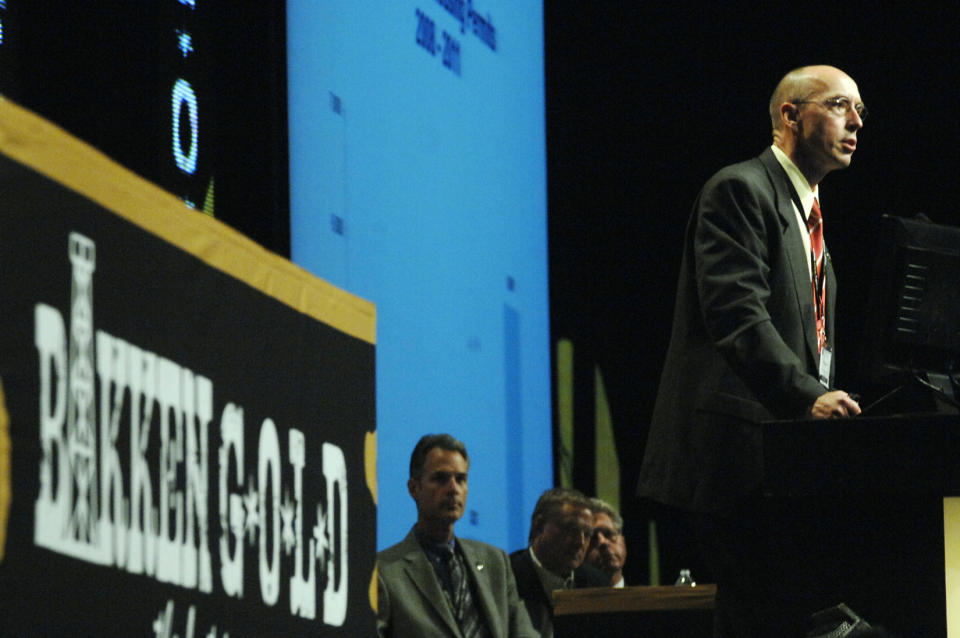ND oil boom city reaping prosperity, problems
BISMARCK, N.D. (AP) — Oil has brought enormous economic prosperity to the busiest city in North Dakota's booming oil patch but also has exacerbated problems in housing, infrastructure and traffic, even pushing some "stressed out" older residents to move away, Williston Mayor Ward Koeser told industry and government officials Tuesday.
Koeser said the city is experiencing exciting times and unprecedented wealth but it's far from figuring out how to survive the biggest oil rush in the nation.
"We're still in the middle of it and we're still trying to deal with it," Koeser told an audience of several hundred at the Williston Basin Petroleum Conference and Expo in Bismarck.
North Dakota has risen from the nation's ninth-leading oil producing state to the nation's No.2 producer in just six years, with advanced horizontal drilling techniques in the rich Bakken shale and Three Forks formations in the western part of the state.
State statistics show a record 213 rigs were drilling in the oil patch as of Tuesday. Koeser said 90 percent of the drill rigs are piercing the prairie within 90 miles of his city.
The population in Williston has doubled in the past decade to some 30,000 residents and the average wage there has risen from about $32,000 in 2006 to about $80,000, Koeser said. More than half of Williston's residents now work in oil-related jobs, and the city's unemployment rate is at 1 percent, "which I believe is the lowest in the U.S.," he said.
There are some 3,000 unfilled jobs in the city, Koeser said.
While many cities across the nation would be envious of Williston's success, the city now holds some dubious distinctions.
Koeser said the city "hasn't been sitting on its hands" and has done its best to keep up with the explosion of activity. But the hundreds of millions of dollars in new housing construction and infrastructure improvements have failed to keep pace with the explosion of drilling activity in the area.
Koeser said the city ranks No. 1 in the nation for housing shortages and rent inflation. A one bedroom apartment is fetching more than $2,300 monthly, matching or exceeding those in the nation's biggest cities.
"Rent is a huge problem, especially for senior citizens on fixed incomes, Koeser said.
Oil-related traffic is causing headaches and torn-up roads, he said.
"It's hard to imagine anywhere else in the country that deals with so many trucks," Koeser said.
Wayne Biberdorf, who was appointed in March by Gov. Jack Dalrymple as North Dakota's new "energy impact coordinator," said he's been meeting with local officials throughout the state's oil patch listening to concerns and reporting them to the governor.
"What I learned was not unexpected," Biberdorf said. "There is a lot of stress in western North Dakota."
Williston has experienced a boom before which lasted for several years until the 1980s when it went bust. When oil development rekindled in the region in 2004, the city spent $5 million on planning studies to prepare. But no one could foresee the tsunami of oil activity that followed with the new drilling techniques that allowed oilmen to tap vast oil reserves two miles beneath the surface.
"By the time the studies were complete, they were obsolete," Koeser said.
Koeser said the city will be forever changed with the oil boom and hopefully for the better.
"We want to remain a place where people want to live," Koeser said. And "prevail as a better community than when it all started."





